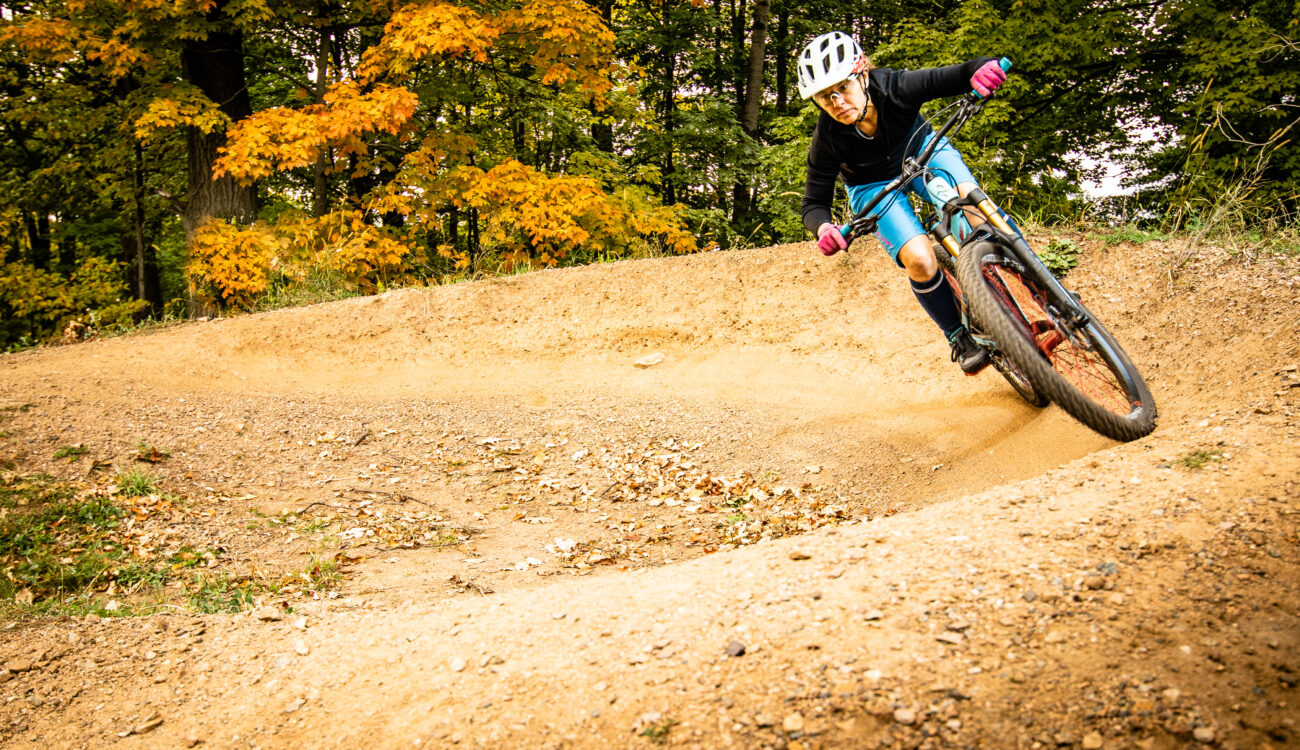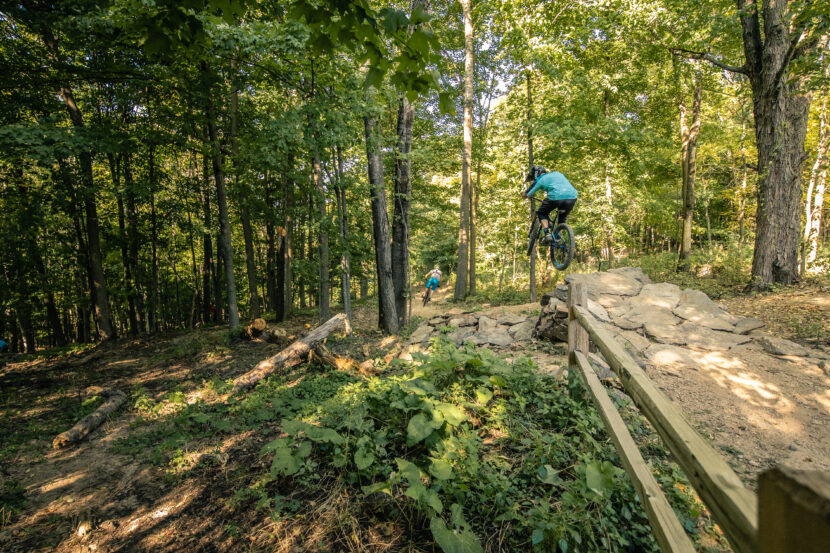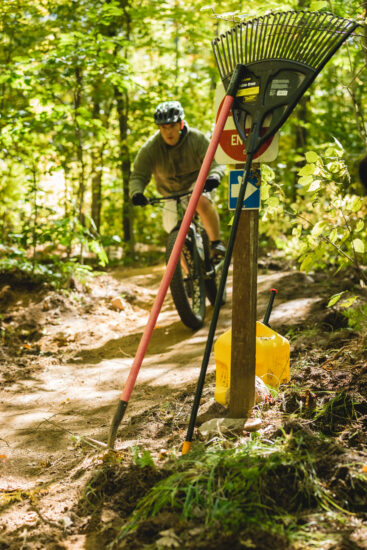
Enjoying the Mountain Bike Renaissance in Wisconsin
Wisconsin was once in the forefront of mountain biking in the United States.
In 1983, a small mountain bike race in Cable, near the Chequamegon National Forest, launched what became the Fat Tire Festival, which is currently part of the national Lifetime Grand Prix series and one of the largest mountain bike races in the world. La Crosse had handbuilt trails which were featured in an International Mountain Biking Association (IMBA) guide on how to build berms in the early 2000’s.
The Chequamegon Area Mountain Bike Association (CAMBA) trails earned the IMBA Bronze level designation, the trails attracting thousands of visitors from across the country who made annual pilgrimages to the Northwoods. Riders enjoyed cycling the network of more than 130 miles of backcountry trails or racing in the national caliber Fat Tire Festival, Borah Epic, Seeley Prefat, and/or Chequamegon 100. The Wisconsin Off Road Race Series (WORS) became the biggest MTB race series in the nation as local chapters of the Wisconsin Off Road Bicycle Association (WORBA) built local trails in their communities around the state.
That initial enthusiasm and momentum kept Wisconsin near the front of the pack for a decade or so, but then we began to fall off the front as our neighbors in northern Minnesota and the Upper Peninsula of Michigan began to build modern, bike-optimized destination trail systems. For mountain bikers across the country, the name Aaron Rogers became synonymous not with football, but with exciting bike-optimized trails as he turned the northernmost tip of the Keweenaw Peninsula into a national mountain bike destination.
Similar flowy MTB trail networks began popping up both in and close to Duluth and across the Iron Range region of northern Minnesota and around Marquette, Michigan. Then the amazing investment in mountain bike trails around Bentonville, Arkansas exploded and suddenly Wisconsin mountain bike trails started to look a bit dated. Before we knew it, Wisconsin riders began traveling outside the state to ride in small towns many of them had never heard of. Places like Cohassat, Copper Harbor and Cuyuna were getting national attention for developing cutting edge trails. Even locals in the Cable/Hayward area, home to the CAMBA trails, started driving to Minnesota or Michigan to ride on weekends.
That slide began to slow in the last handful of years as riders who belonged to local MTB trail groups began to build and add modern MTB features to their own trail networks. Local groups started working with IMBA Trail Solutions to help with design plans, earned some IMBA Accelerator grants, and raised the funds necessary to hire professional trail builders so they didn’t have to travel to ride the kind of trails they had grown to enjoy out-of-state.

Perhaps the most notable of all the developments are the changes which are coming to Wausau. The Central Wisconsin Offroad Cycling Coalition (CWOCC), the Wausau-area mountain bike group, had already built and maintained a pretty good trail network at the Nine Mile Recreation Area, added some more flowy trails with modern features in nearby Ringle, and even hired professional builders to construct some gravity trails and a small bike park at Sylvan Hills Park. Thanks to those efforts by CWOCC, the residents of the area already enjoy the benefits of local trails, and area businesses appreciate how these trails attract visitors. Add in the existing downhill skiing at Granite Peak at Rib Mountain State Park, as well as a world-class kayak course at Whitewater Park on the Wisconsin River, and Wausau is already the “Chamonix of the Midwest.” So when the opportunity arose to review the Master Plan for Rib Mountain State Park, the community came out with strong support for a significant investment in bike-optimized, purpose-built, lift-served mountain bike trails in the state park.
Historically, Wisconsin state parks have not pursued mountain biking as a form of recreation. However, an outpouring of support from area residents and businesses changed that. In December, the State Natural Resources Board (NRB) approved a new master plan for Rib Mountain State Park that adds two important improvements for cycling. The first is a multi-use natural trail encircling the base of Rib Mountain, creating a recreational opportunity for cyclists, hikers, and walkers of all skill and comfort levels.
The second impactful upgrade is the NRB approval of 12 to 20 miles of mountain biking trails suitable for a variety of skill levels, including “flow” and “gravity single-track” trails. This is historic – it’s the first time the DNR has authorized new mountain bike trails in a state park that will include downhill or gravity trails that are serviced by a lift. The lifts are already there for winter use at Granite Peak, so this project leverages the existing investment by the private company that runs the ski hill in the winter.
Key support for this historic policy change came from the Greater Wausau Prosperity Partnership, which is the local chamber of commerce. This group clearly recognizes the importance of outdoor recreation on economic development, so much so that they helped hire an independent consultant to gather information and develop alternatives for downhill skiing and mountain biking options at the park. Dave Eckmann, President of the Greater Wausau Chamber of Commerce, said, “Outdoor recreation plays a key role in our region’s ability to attract and retain a skilled workforce to serve our diverse business community.”
The project was supported by CWOCC and IMBA, including Mike Repyak, the IMBA Director of Planning and Design. Born and raised in Wisconsin, Repyak is a nationally recognized expert on mountain bike and ski trail planning. Mike even used to work at the Wisconsin DNR, as well as previously serving as the State Trails Coordinator.
With all that experience, Repyak noted the significance of this opportunity, saying, “Wisconsin State Parks, the Wisconsin DNR, and the NRB have an opportunity to create an authentic trail amenity for Wausau, Central Wisconsin, and the communities around that will be a regional draw, that will attract visitors from across the midwest and quite possibly develop a national destination.” It’s not an overstatement to say that this plan changes the game for both the region and the state.

One particularly exciting part of this opportunity is the amount of local and regional interest and support it has seen. The Wisconsin DNR received an almost unprecedented number of comments about the different master plan options. And the vast majority of the more than 6,000 comments received during the planning phase supported expanding mountain biking options in the park, as did most of the more than four hours of in-person testimony at the December NRB meeting.
This story first appeared in the 2023 Bike Fed Ride Guide magazine, co written by Dave Schlabowske and Chris Stindt. Photos courtesy of Trek. To have the annual magazine mailed to your home each spring, and receive other valuable benefits, we invite you to join or renew with membership.